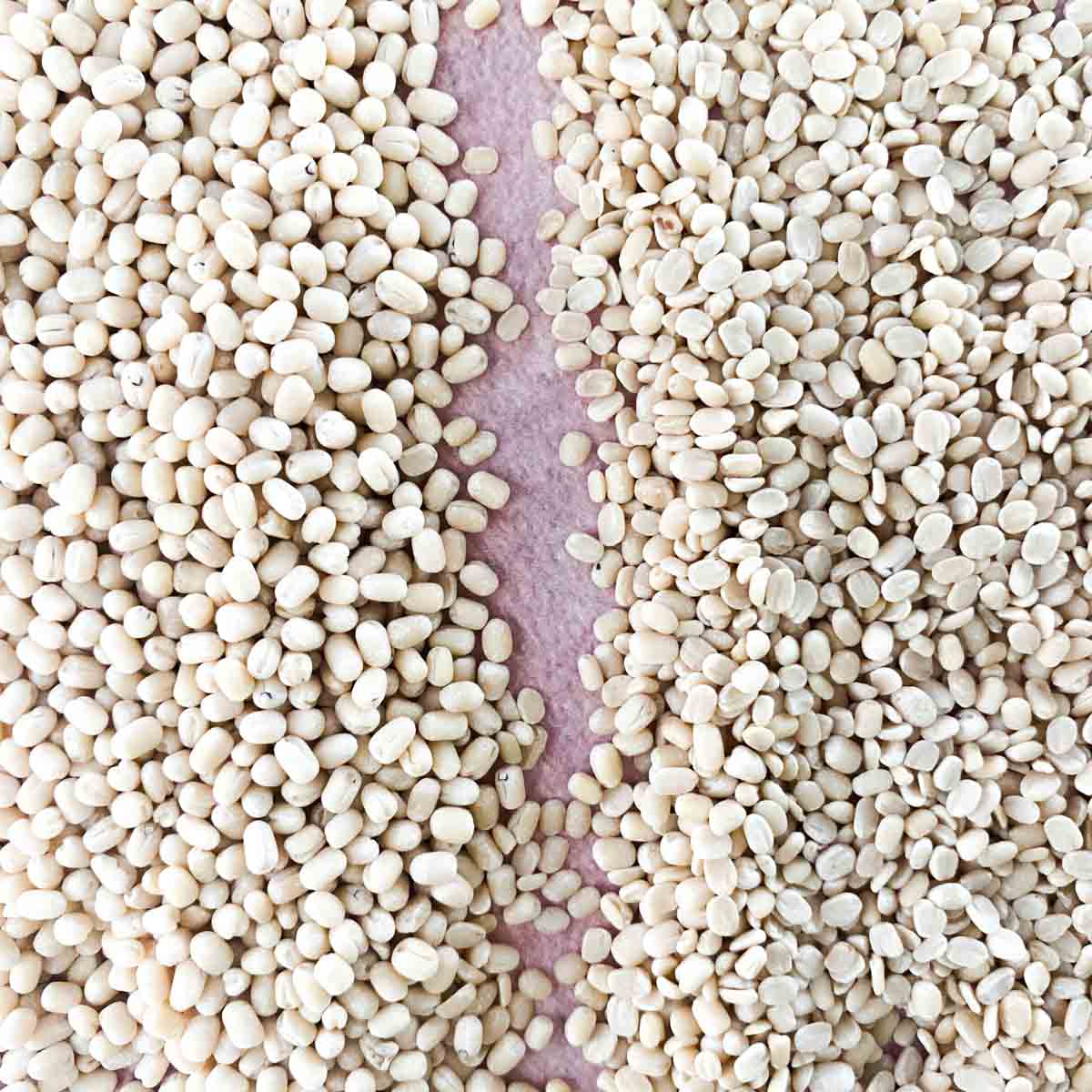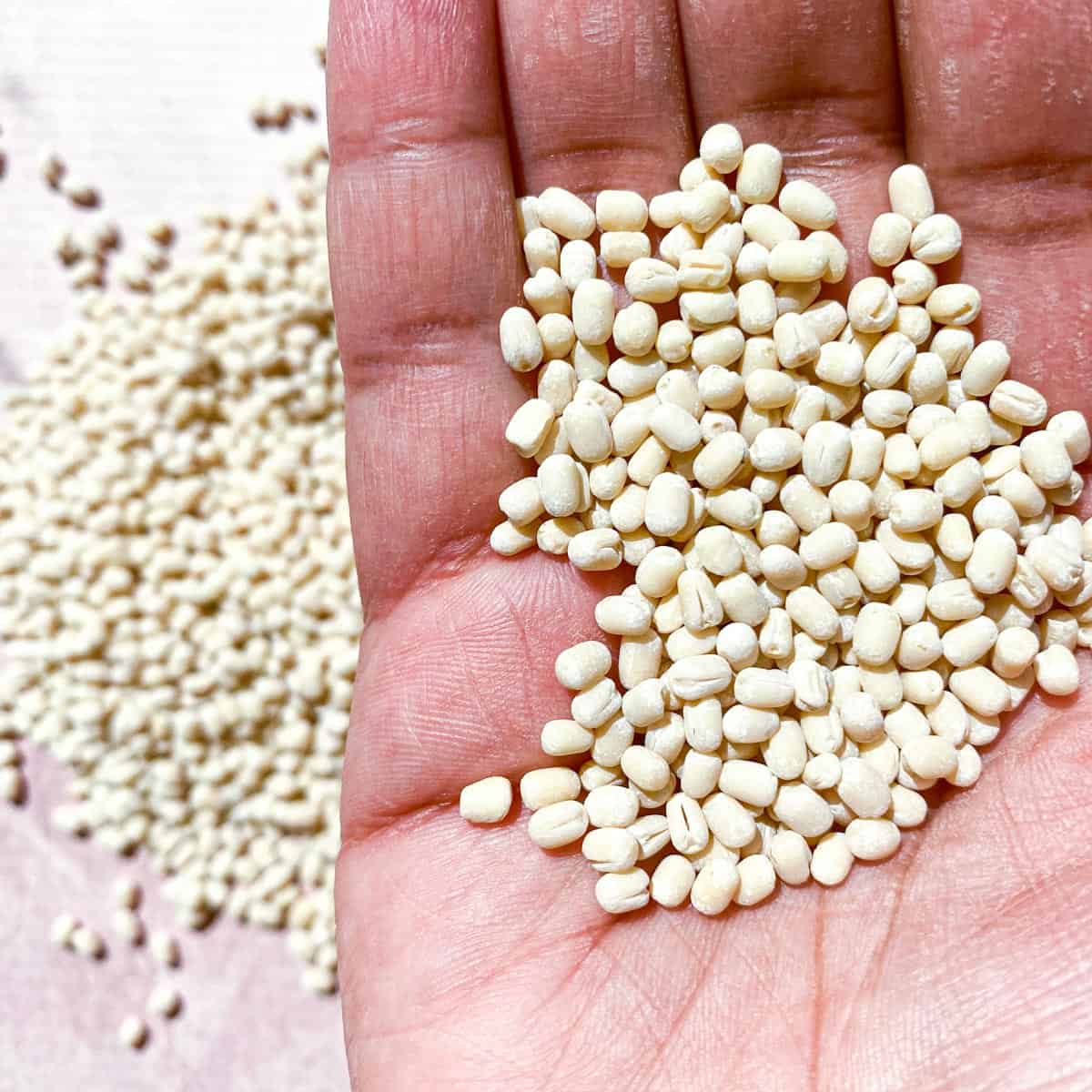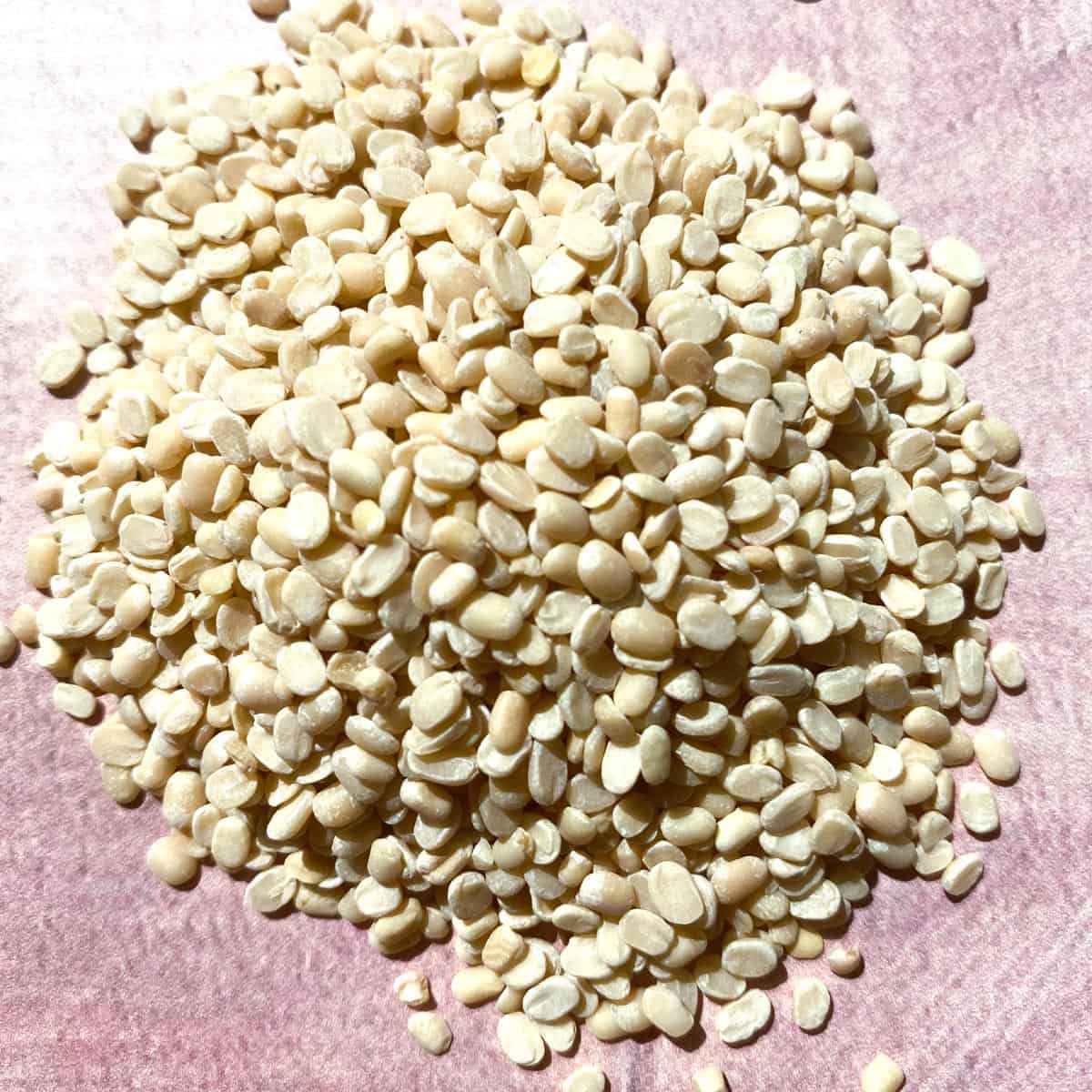Different variations of urad dal
In general, most dals including urad dal come in variations such as whole vs. split and hulled vs. not hulled (meaning skin removed or on). You can learn more about how this applies to other dals in the ultimate guide to Indian dals. However, for urad dal, the main varieties are black urad dal, urad gota, split urad dal (hulled & unhulled), and urad dal flour. Below, we will go over the different varieties in detail and explain how each one has a different purpose in Indian cooking.
Black urad dal
Definition: Black urad dal is urad dal in its whole form that still has the skin on (it isn’t hulled). How it is used in Indian cooking:
Black urad dal is a thick whole lentil that retains its oval shape and can add texture to dishes it is added to. It often acts similarly to how black beans are used in cooking. Black urad dal is used in dishes like dal makhani where the dal is cooked in a creamy sauce and the whole dal has a firm outer texture with a creamy and starchy interior. Black urad dal has enough heft that it can also be cooked and used as filling for a lentil burger. Does it need to be soaked? Yes - just like beans, black whole urad dal cooks more evenly when it is soaked before cooked.
Substitutes: Black eyed peas, green whole moong dal, black beans
Urad Gota
Definition: Urad gota is a name for whole urad dal that has its black skin removed. How it is used in Indian cooking:
Urad gota is used a lot in South Indian cooking. It is the best variety to make dosas, medu vadas, and idlis! Why? The skin of the urad dal prevents the batter from becoming creamy and smooth in these applications, so the urad gota (without skin) is preferred to the black urad dal with the skin on. Does it need to be soaked? Yes! It is crucial to soak urad gota for at least 4 hours or overnight in order to grind into smooth batters for dosa/idli/vada.
Substitutes: Chana Dal/Moong Dal - Dosas that use chana dal/moong are called pesaratus. Vadas that use chana dal are also called Masala Vadas.
Urad Dal Split (with/without skin)
Definition: Split urad dal is urad dal that has been processed and cut into flat disks. Split urad dal can be further categorized into dal with the skin on (black) OR it can be split after the skin is removed (white)! How it is used in Indian cooking:
Split urad dal is used as a crunchy addition in tadkas or temperings in Indian cooking! It is added to hot oil along with other aromatics to add a nutty flavor but also a crunch to many dishes. Split urad dal can also be used to make creamy dals. Since it is split, the dal loses its shape when cooked and melts into a creamy and thick dal. The split urad dal with the skin will have more texture as well as more nutrients compared to the one without the skin! However, the one without the skin will yield a more creamy and velvety texture. Does it need to be soaked? Nope. Definitely do not soak if you are using split urad dal in tadkas. If you are using this in dals, then you can soak, but it is not required since the dal is so thin.
Substitutes: Substitute crunchy peanuts or sesame seeds if using in tadka and substitute masoor/moong dal if using in dal curries.
Urad Dal Flour
Definition: Urad dal flour is flour that is made from urad gota (whole skinless urad dal) How it is used in Indian cooking:
Urad dal flour is commonly used to make applam, also known as papadum, which is a crunchy dal-based snack. It can also be used in conjunction with rice flour to make idli/dosa batters without the use of a grinder!
Where to buy it?
This is a high level overview on urad dal! Please leave a comment below letting me know what you thought of this article and if it was helpful to you! I always love hearing your questions and your comments 🙂







